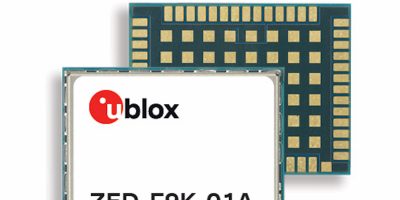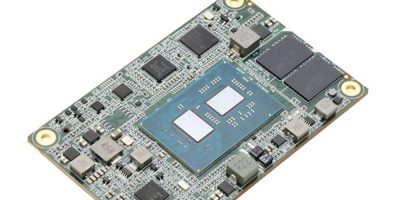Integrated and reliable lane identification is provided by the ZED-F9K-01A high-precision AEC-Q104 GNSS module by u-blox. The ZED-F9K-01A is a GNSS (global navigation satellite system) module with embedded hardware, software and IMU (inertial measurement unit) to provide a self-contained positioning module.
The ZED-F9K-01A supports both L1 / L2 / E5B and L1 / L5 bands for flexibility, satellite availability and security. It combines multi-band and multi-constellation GNSS technology with dead reckoning high-precision RTK (real-time kinematic), which enables decimeter-level accuracy.
The u-blox ZED-F9K-01A natively supports the u-box PointPerfect GNSS augmentation service. It delivers multiple GNSS and IMU outputs in parallel to support all possible architectures, said u-blox, including a 50Hz sensor-fused module with very low latency. It enables advanced real-time applications, while the optimised multi-band and multi-constellation capability maximises the number of visible satellites even in urban conditions.
Dependable protection level output and advanced security features include anti-spoofing and anti-jamming. The modules operates at up to 105 degrees C for integration into vehicles “without design constraints” said u-blox.
ZED-F9K-01A will be on display at CES 2023 in Las Vegas, USA in January (booth #10923). Samples of ZED-F9K-01A are available today for evaluation.
u-blox specialises in positioning and wireless communication in automotive, industrial, and consumer markets to develop services and products which let people, vehicles, and machines determine their precise position and communicate wirelessly over cellular and short range networks. The company has a broad portfolio of chips, modules and secure data services and connectivity.
u-blox is headquartered in Thalwil, Switzerland, and has offices in Europe, Asia, and the USA. (www.u-blox.com)







